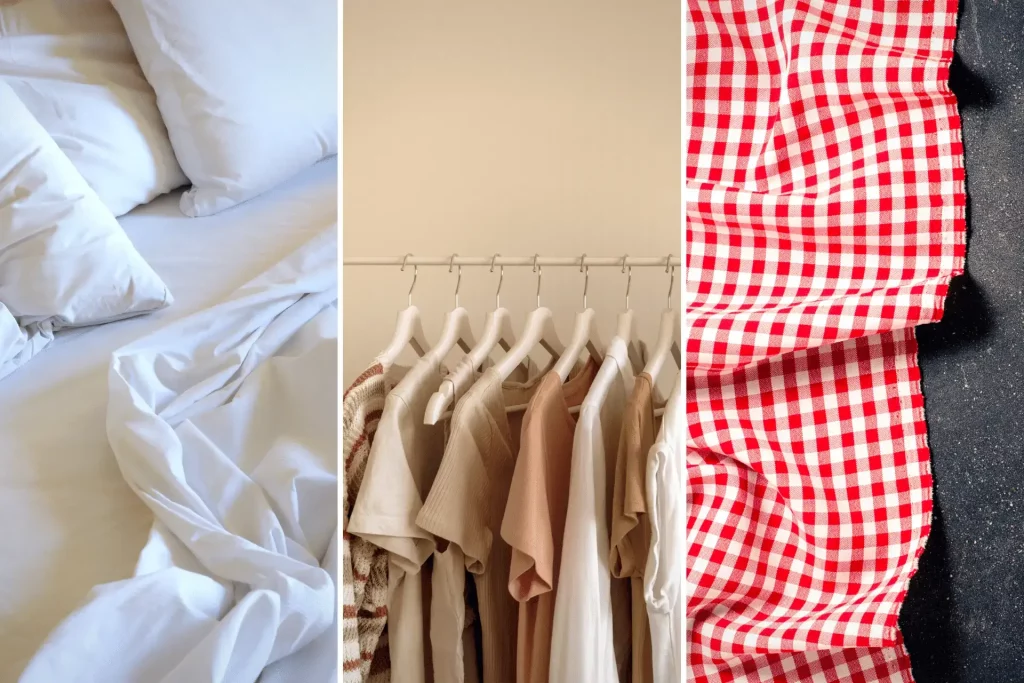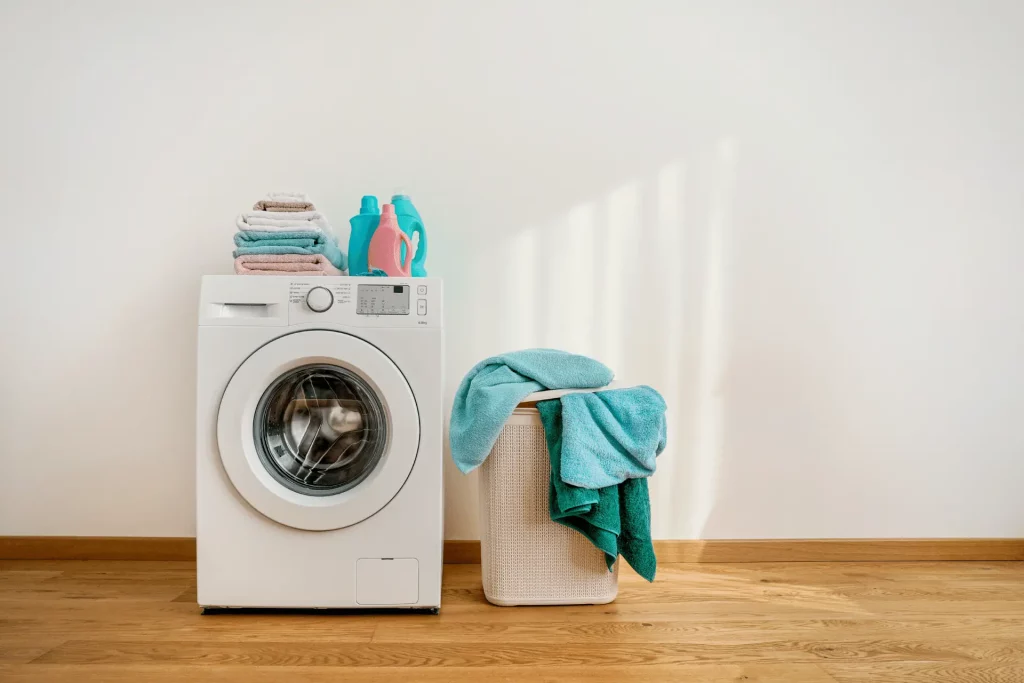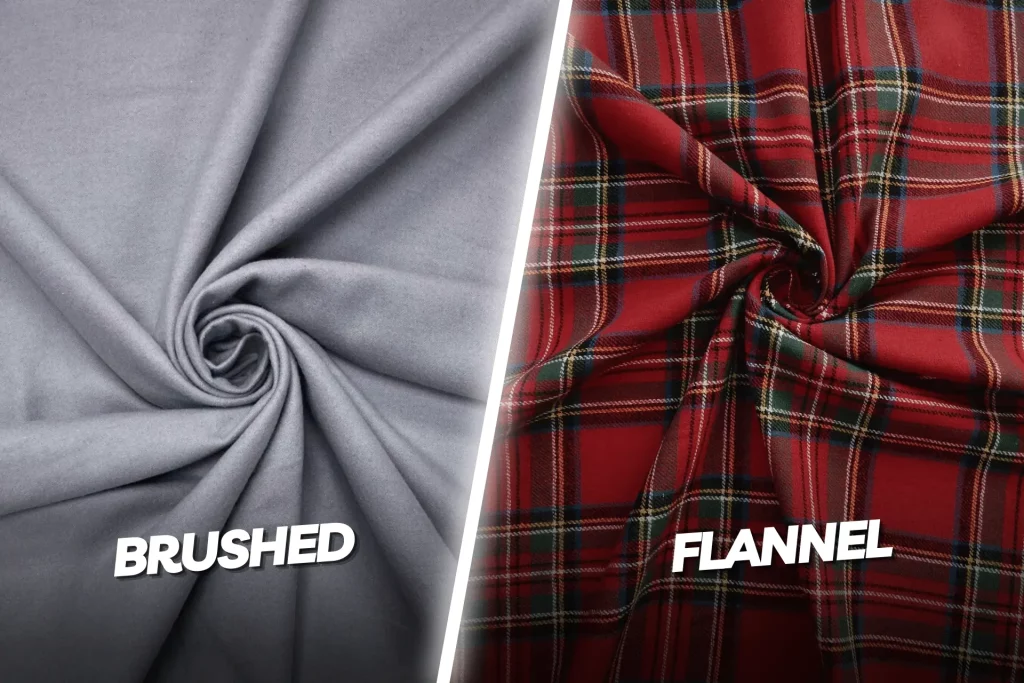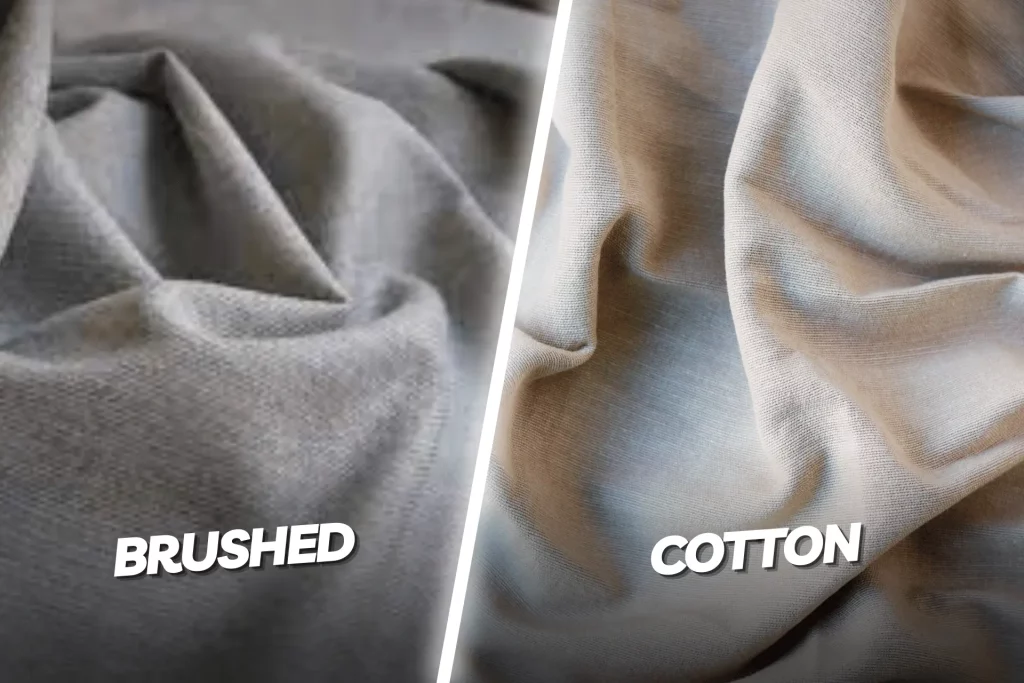Cotton is a fabric utilized in various contexts and sees much use because of its pliability, breathable nature, and long-lasting qualities. It is frequently used to manufacture textiles, including clothing, bedding, and other accessories. Cotton in its brushed form has recently seen a surge in demand, contributing to the material’s rising popularity.
A unique process is used on this material, which results in an improved texture that is kinder to the touch and makes the garment more pleasant to wear. In this piece, we will discuss what brushed cotton is, how it is made, its benefits, and how it stacks up against other kinds of cotton textiles.
By the time you finish reading this article, you will have gained a comprehensive grasp of this fabric and will be able to choose whether or not brushed cotton is the appropriate fabric for the next piece of clothing you buy.
Table of Contents
How is Brushed Cotton Made?
Brushed cotton is a type of fabric that is manufactured using a specific manufacturing technique. The procedure involves brushing the cotton strands with a tiny metal brush to generate a soft and fuzzy surface. The final product is a fabric that, compared to regular cotton fabric, is noticeably smoother and more comfortable to wear.
The production of brushed cotton begins with selecting exceptionally high-quality cotton fibers. After that, cotton is used to make yarn, which is used to weave fabric. Following the production of the material, it is subjected to a step known as brushing.
The cloth is passed through several metal brushes positioned at various angles during brushing. These brushes work by gently pulling the fabric’s fibers, which results in a surface that is fuzzy and velvety.
During this method, the brushes used to brush the fabric are made of a wonderful metal that is kind to the material and helps prevent the fabric from becoming harmed throughout the brushing process.
Following the completion of the brushing procedure, the cloth is washed to remove any loose fibers or dust that may have been collected as a result of the brushing process. This guarantees the fabric is clean and ready to be used after processing.
It is essential to remember that there are several variations of brushed cotton textiles and that the function may alter the brushing process that the cloth will serve.
Some textiles only have the brushed texture on one side, while others have the brushed texture on both sides. Fabrics can also have varied degrees of softness and fuzziness due to the varying amounts of brushing done, which is another variable.
Brushed cotton is a soft, lovely, and appropriate fabric for various textile applications, including clothes, bedding, and accessories.
Uses of Brushed Cotton:

Cotton that has been brushed is a versatile fabric that may be utilized in a wide range of different textile applications. It is frequently the material for clothes, bedding, and accessories because it is pliable, long-lasting, and allows air to pass through it. The following is a list of some frequent applications for brushed cotton:
Clothing:
Due to its ease and softness, brushed cotton is preferred for casual clothing like sweatshirts, hoodies, and sweatpants. The surface of the cloth is brushed, giving it a fuzzy appearance that makes it feel cozy on the skin. This is especially true for double-brushed cotton, which is a fabric that has been brushed on both sides. The delightfully smooth texture of double-brushed cotton makes it perfect for loungewear and sleepwear.
Brushed cotton also makes various clothing styles, loungewear, and sleepwear. For shirts, skirts, and dresses, it is frequently utilized. All seasons are suitable for wearing apparel made of brushed cotton since it is warm in the winter and breathable in the summer.
Bedding:
Sheets and pillowcases are two everyday bedding items made of brushed cotton. Brushed cotton is frequently referred to as flannel when used for bedding. Since they offer additional warmth and comfort in the winter, flannel sheets are a popular option. The cloth becomes more absorbent throughout brushing, keeping the sleeper dry and toasty.
Because of its softness and robustness, brushed cotton bedding is also very common. Compared to other types of bedding, the fabric is less prone to pill or wrinkle, so it will last longer and maintain its appearance better. Moreover, brushed cotton bedding is more stain and spill resistant than other types of bedding, making it popular in families with kids or dogs.
Accessories:
Brushed Cotton is frequently used to produce accessories like scarves and hats. Because of its pliable nature and homey character, it is a material commonly used for objects like these.
In addition, because it is long-lasting and can resist significant amounts of wear and tear, brushed cotton is frequently used in the production of bags and backpacks. When brushed cotton is used in bags and backpacks, it is commonly combined with other materials like leather or nylon to boost the bag’s durability and strength.
Home Decor:
Curtains, tablecloths, and upholstery are home decor products that might benefit from brushed cotton. Because of its natural appearance and gentle feel, it is frequently used as a component in the design of home environments that are warm and inviting.
In addition, because it is simple to clean and preserve, brushed cotton is frequently used in producing goods intended for use as home decor. Because it can be washed and dried in a machine, the fabric is an excellent option for homes always on the go.
In general, brushed cotton is a flexible fabric that can be used for a wide variety of textile applications because of its high level of suitability. Because of its suppleness, longevity, and breathability, it is a fabric frequently used for clothes, bedding, accessories, and interior design.
Whether you’re searching for something cozy to wear, a comfortable bed to sleep in, or a home setting that’s warm and inviting, brushed cotton is an excellent material to use.
Care and Maintenance of Brushed Cotton:

To ensure it remains in good condition for the longest time possible, brushed cotton, like any other fabric, must be adequately cared for and maintained. The following are some suggestions for the care and maintenance of brushed cotton:
Washing:
While washing brushed cotton, using cool or lukewarm water and a delicate setting on the washing machine is critical. The fabric may lose shape and become less vibrant if washed in hot water, and the fibers may become damaged if the cycle is too vigorous.
Also, it is essential to utilize a gentle detergent that contains no chlorine or fabric softener. Bleach can cause discoloration and damage to the fabric, while fabric softener can coat the fibers of the cloth, reducing its overall softness.
Various variations of cotton are available. Due to this, they require different washing methods. In order to wash Egyptian cotton sheets, you should use this method.
Drying:
When drying brushed cotton, it is recommended to choose a setting that generates a minimal amount of heat or hang the cloth to dry in the air. The fibers in the fabric can be damaged by excessive heat, which can also cause the material to fade or shrink. If you have no choice but to use a dryer, take the fabric from the dryer as soon as it is dry to avoid over-drying it, which can cause the fabric to become ruined.
Ironing:
If you need to iron brushed cotton, the easiest way is to set the iron to a low heat setting and iron on the back of the cloth, which is the wrong side. While ironing on the right side of the cloth, the brushed fibers might become damaged and flattened due to the heat from the iron. In addition, it is highly recommended to use a pressing cloth to shield the fabric from the direct heat of the iron.
Storage:
When keeping brushed cotton, it is critical to do so in a location that is both cool and dry and is shielded from direct sunlight. The cloth can lose its color and become brittle when exposed to sunlight, and mildew and other damage can be caused by exposure to moisture. Also, it is essential to avoid brushing cotton with mothballs or any other chemical pesticides since doing so might cause the fabric to be ruined.
If you follow these guidelines for care and maintenance, you will be able to assist your brushed cotton items, and bedding lasts for a more extended period. If it is cared for properly, brushed cotton may retain its suppleness and comfort for many years to come despite being a fabric that is long-lasting.
Advantages & Disadvantages of Brushed Cotton:
The various benefits of Brushed cotton have made it a well-liked material for use in multiple applications, including apparel, bedding, and home decor. On the other hand, it has a few drawbacks that can prevent it from being utilized in some contexts. The following is a list of some of the benefits and drawbacks associated with brushed cotton:
The benefits of using brushed cotton are as follows:
Softness: The fact that brushed cotton is so very soft is one of its most significant selling points. The act of brushing produces a fuzzy surface that is supple and pleasant to the touch when it has been finished. Because of this, it is a material that is frequently used in apparel, bedding, and home design, all of which place a premium on coziness and suppleness.
Warmth: Because it is a warm fabric, brushed cotton is frequently used to produce winter apparel and bedding. During the brushing process, pockets of air are created inside the fabric, which contributes to the fabric’s ability to retain heat and keep the user toasty.
Breathability: Even though it is warm, brushed cotton is a fabric that allows air to pass through it. It helps regulate body temperature and prevents overheating by allowing air to circulate through the cloth, making it more breathable.
Durability: Brushed cotton is a sturdy fabric that can resist extensive use and many washes without showing signs of wear. Because it is less prone to pill or wrinkle than other cotton varieties, it will last longer and look better over time. This is because the less likely it is to pill or wrinkle.
The following are some disadvantages of brushed cotton:
Absorption of water: The brushing procedure used to manufacture brushed cotton might cause the cloth to absorb more water than standard cotton. Brushed cotton is a kind of cotton. Because of this, it might not be the best choice for some applications, such as swimwear or other apparel that has to dry rapidly.
Pilling: Even though it is long-lasting, brushed cotton can pill throughout its lifetime. Pilling results from the fibers in the fabric becoming tangled with one another and forming little balls on the surface of the cloth. This might give the cloth a worn appearance and cause it to become less supple.
Lint: Over time, brushed cotton may also shed lint, which may be problematic for individuals who suffer from allergies or respiratory conditions.
Cost: Because of the additional manufacturing procedure necessary to manufacture brushed cotton, the cost of brushed cotton is often more than that of ordinary cotton. Those working with a limited budget may find this less accessible to them.
In general, brushed cotton is a fabric that can be used for various textile applications because of its versatility and resistance to wear and tear. It is a well-liked option for use in clothes, bedding, and interior decoration due to its suppleness, warmth, breathability, and durability; however, it does come with a few drawbacks.
Brushed Cotton vs. Flannel:

Both brushed cotton and flannel are cotton fabric forms frequently used to construct bedding. Although they have certain things in common, there are also some important distinctions between them. The following are a few of the differences that may be made between brushed cotton and flannel:
- The process of Manufacturing:
The surface of conventional cotton fabric is given a plush and fuzzy appearance by brushing it with a fine metal brush, which results in the production of brushed cotton. On the other hand, flannel is produced by loosely spinning the yarn into a thread and then weaving the thread into fabric. After then, the cloth is brushed, which gives flannel its signature fuzzy feel and appearance.
- Thickness:
Flannel is a thicker fabric than brushed cotton, contributing to its warmer material status. This is because the yarn used in its production is spun more loosely, and the product is then brushed, resulting in a surface that is thicker and more insulating. On the other hand, brushed cotton is thinner and lighter than regular cotton, making it a more appropriate choice for hot climates.
- Softness:
Although brushed cotton and flannel are well-known for their suppleness, the consensus is that they are the softest. This is because the brushing technique utilized in the production of brushed cotton is more in-depth and results in a more uniformly smooth surface.
- Durability:
Flannel and brushed cotton are two types of sturdy materials that can resist extensive use and much washing without losing their shape. On the other hand, flannel is typically more prone to pilling, which, over time, can make it appear worn and cause it to lose some of its softness. Cotton that has been brushed has a lower risk of becoming fuzzy and pilly over time; as a result, it is more durable and better able to retain its original softness.
- Price:
Due to the additional manufacturing procedures necessary to manufacture brushed cotton and flannel, both types of cotton are more costly than regular cotton. Conversely, flannel is often more expensive than brushed cotton because the fabric is denser and provides more excellent insulation.
The decision between brushed cotton and flannel should, in most cases, be based on the particular requirements and preferences of the person wearing the garment. Both of these materials come with their benefits and drawbacks, and they are equally appropriate for various uses in the textile industry, such as apparel and bedding. Ultimately, warmth, softness, durability, and affordability determine whether brushed cotton or flannel is better.
You just learned about the differences between two types of cotton fabric. Find out what the most popular cotton types are, and how they differ in terms of their properties.
Brushed Cotton vs. Cotton:

Brushed and regular cotton are two cotton fabrics popular for various textile applications. Brushed cotton is a fabric brushed on one or both sides to create a soft and fuzzy texture. On the other hand, regular cotton is a cotton fabric that has not been brushed and has a smooth and crisp texture.
The surface of brushed cotton is rougher than that of standard cotton, one of the most notable distinctions between the two types of cotton. Regular cotton has a sharp texture characteristic of natural cotton fibers, but brushed cotton has a soft feel that is very nice on the skin.
Brushed cotton is available in both normal and organic varieties. Because the brushing process separates the cotton fibers and generates a fluffier fabric, brushed cotton is often softer than plain cotton. This is because brushing creates a smoother fabric.
Because brushing creates microscopic air pockets within the fabric, brushed cotton is often warmer than regular cotton. This is because ordinary cotton is not brushed.
Because these air pockets retain heat and keep the user warm, brushed cotton is an excellent option for winter clothes and bedding because it is comfortable and practical. Yet, because regular cotton is a fabric that breathes more efficiently, it is a more suitable option for summertime apparel and bedding.
Both brushed and normal cotton are highly durable materials that resist significant wear and tear and many washes without showing signs of wear.
On the other hand, brushed cotton is far less likely to develop creases and pilling than ordinary cotton. The brushing procedure helps make the cloth smoother and more consistent, which minimizes the possibility that it will become snagged or damaged in any other way.
Compared to a plain cotton, brushed cotton often comes with a higher price tag due to its higher quality. This is because an additional manufacturing procedure must be completed to produce it. On the other hand, Ordinary cotton is much easier to come by and costs significantly less, making it a more reasonable choice for consumers shopping on a limited budget.
The decision between brushed cotton and ordinary cotton should be made based on the individual’s preferences and the requirements of the particular textile application.
Both brushed and normal cotton are flexible and popular textiles well-suited to several functions and may be used for various applications, such as apparel, bedding, and home décor. There is a cotton fabric that is ideal for your requirements, regardless of whether you place a higher value on affordability, warmth, breathability, or softness.
Frequently Asked Questions:
Is brushed cotton a breathable fabric?
Indeed, brushed cotton is a fabric that breathes and permits air to flow, making it a cozy choice for a range of functions. Due to the brushing process, it is often warmer than conventional cotton, but it still lets air pass between the strands, helping to control temperature and prevent overheating.
Which apparel and bedding items work best with brushed cotton?
Brushed cotton is preferred for winter clothes and bedding due to its warmth and softness. It is frequently used for comfy blankets, throws, pajamas, robes, sheets, and duvet covers. Although it may be used for different clothing and bedding, it might be less suitable for usage, including hot weather or much exercise.
Does brushed cotton shrink in the wash?
Brushed cotton can shrink in the wash like other cotton textiles if it needs to be adequately cared for. It’s crucial to wash brushed cotton in cold or lukewarm water and avoid using high heat settings in the dryer to minimize shrinking. Also, it’s vital to prevent over-drying, which might shrink the fabric or cause it to lose its form.
Is brushed cotton more expensive than regular cotton?
Because brushed cotton requires a different manufacturing technique than plain cotton, it is typically more costly. The more excellent price may make it less affordable for specific individuals, despite its numerous advantages, and it is a common material for clothes and bedding. However, high-quality cloth’s enhanced resilience and lifespan can pay dividends in the long term
Bottom Line:
In conclusion, brushed cotton is a well-liked and flexible material coveted for its warmth, softness, and distinctive texture. It is a cotton fabric brushed on one or both sides to produce a comfortable and velvety feel, making it perfect for clothes, bedding, and home decor. The brushing procedure also has air pockets inside the fabric, which aid in retaining heat and keeping the user warm, making it an excellent choice for usage in cold climates.
While typically more expensive than plain cotton, brushed cotton has several advantages that make it a wise investment. While its softness and warmth make it a lovely and snug fabric ideal for winter clothes and bedding, its durability and ease of maintenance make it a practical choice for a wide range of textile applications.

